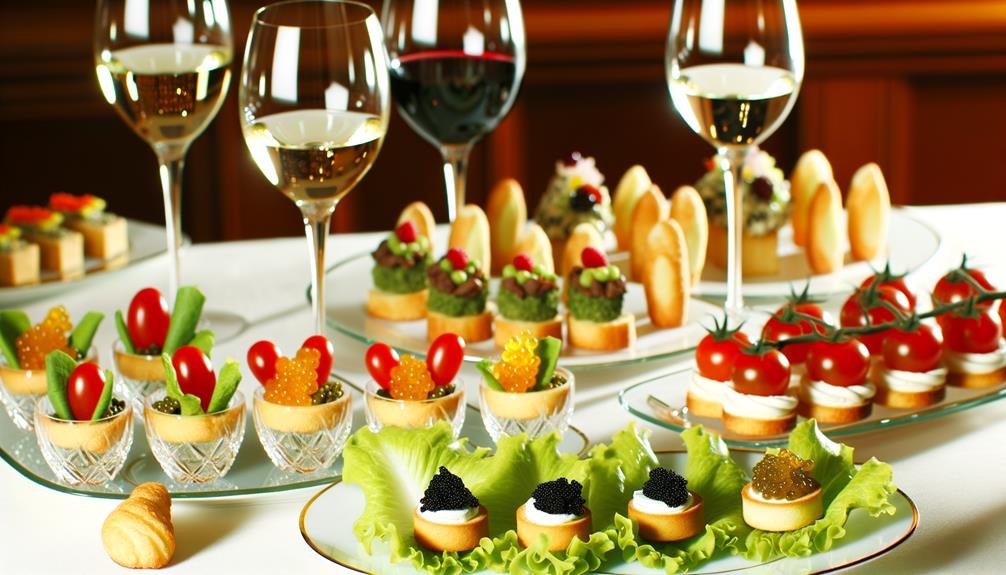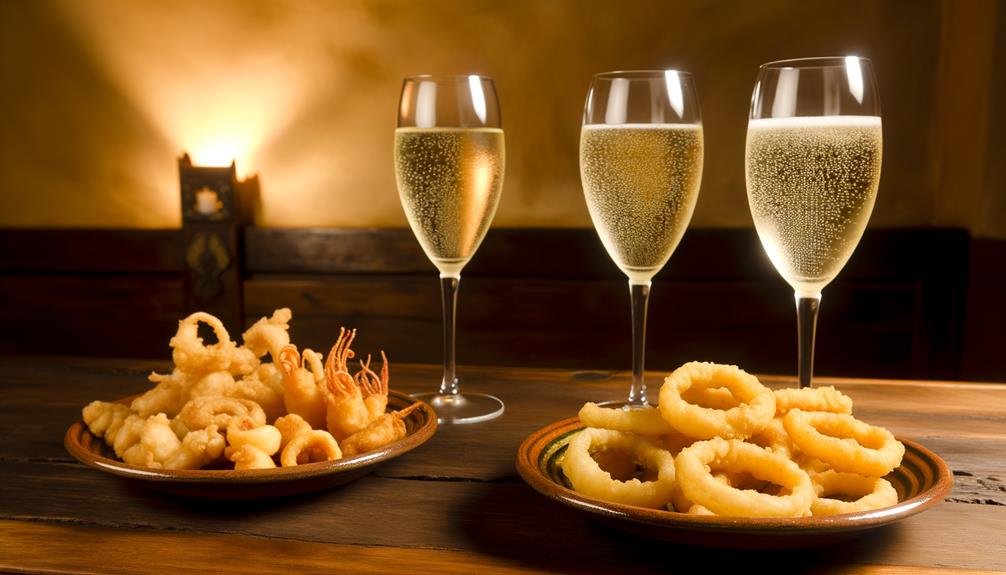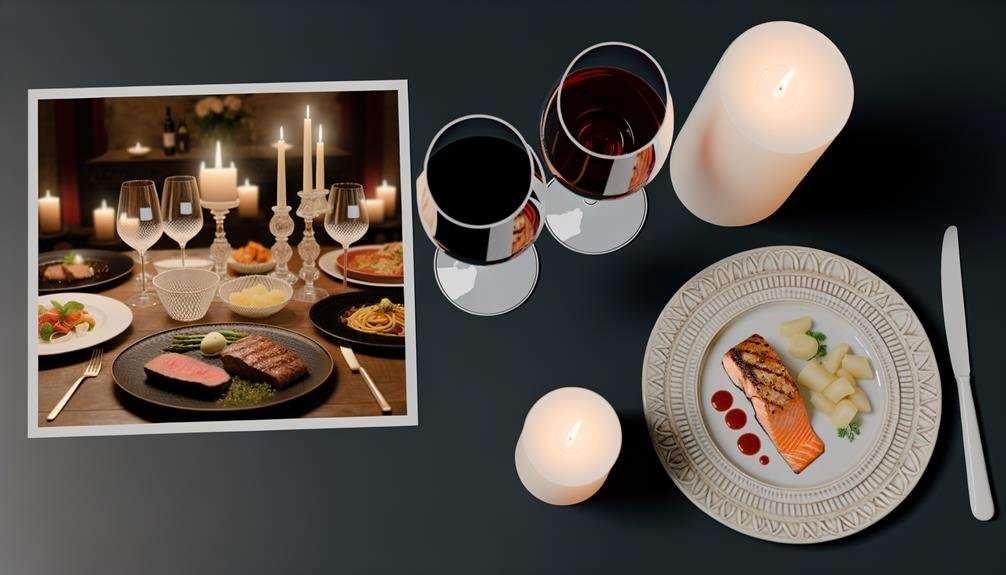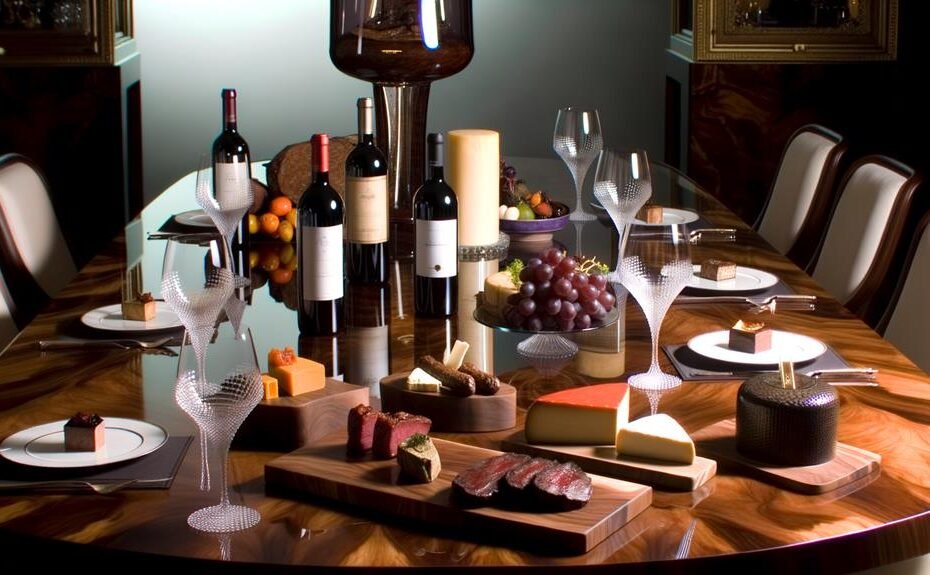Delving into the art of wine pairing involves understanding how different types of wine can either enhance or detract from the flavors of a dish, creating a memorable dining experience. Each wine variety, from sparkling to red, brings unique characteristics like acidity, body, and tannins that can complement or clash with food flavors. By carefully balancing these elements with the food's taste and texture, one can create a harmonious blend that enhances the overall meal.
To navigate this intricate process successfully, it's essential to start with the basics of pairing.
The key to a successful wine pairing lies in understanding how the characteristics of both the wine and the food interact. For example, a light, acidic white wine like Sauvignon Blanc pairs well with seafood dishes like grilled shrimp or fresh oysters, enhancing their delicate flavors. On the other hand, a bold, tannic red wine like Cabernet Sauvignon complements rich, hearty dishes like a juicy steak, creating a balanced and satisfying combination. By considering these factors and experimenting with different pairings, one can discover the perfect match that elevates the dining experience.
Pairing With Hors D'oeuvres

Pairing wine with hors d'oeuvres calls for sparkling wine or an unoaked dry white wine to awaken the taste buds and prepare for the meal ahead. Sparkling wine, served at the start, brings a lively and refreshing touch to excite the palate.
An amuse bouche, such as a delicate canapé, complements this wine, adding a light and invigorating note to the dining experience.
Unoaked dry white wines like Sauvignon Blanc or Pinot Grigio offer a crisp and clean taste that pairs well with various hors d'oeuvres, from seafood to vegetable bites. The acidity and freshness of these wines cleanse the palate, getting guests ready for the next courses while maintaining a sophisticated and innovative dining ambiance.
Pairing With Soups
After enjoying hors d'oeuvres, pairing your soup course with a carefully chosen white wine can elevate your dining experience. Creamy soups, with their rich textures and flavors, pair beautifully with wines like Sauvignon Blanc or Albariño. These wines provide a crisp contrast that complements the creaminess of the soup.
For a more unique pairing, consider enjoying asparagus soup with Sercial Madeira or Gruner Veltliner to add layers of complexity to your meal. Allowing the soup to sit overnight allows the flavors to meld and develop, resulting in a more intense tasting experience.
Serving a chilled white wine alongside your soup provides a refreshing contrast, making the soup course a memorable start to your meal.
Pairing With Fried Appetizers

When enjoying fried appetizers, the ideal wine pairings can elevate your dining experience. Full-bodied white wines, such as Chardonnay, bring a perfect balance with their buttery notes and acidity cutting through the oiliness of the fried dishes.
Viognier, with its floral and fruity profile, offers a delightful contrast to the savory flavors of the appetizers.
For a refreshing touch, opt for a Rosé to cleanse your palate between each crispy bite.
If you prefer red wine, a light-bodied option like Pinot Noir with its bright acidity can effectively cut through the richness of fried foods. These wine choices enhance the textures and flavors of fried appetizers, making each bite a memorable one.
Pairing With Salads
Indulging in the rich flavors of fried appetizers is followed by a refreshing change of pace with a well-paired salad.
When selecting wines to complement this lighter dish, opt for Rosé or light red wines like Pinot Noir to enhance the fresh greens and subtle flavors. For a unique twist, consider orange wine with its complex notes.
If the salad includes fats like avocado or cheese, these wine choices harmonize beautifully. Sparkling wine also serves as a versatile option, cleansing the palate between bites.
Choosing the perfect wine to accompany salads ensures a smooth transition to the next courses in your meal.
Pairing With Main Entrées

Selecting the right wine to pair with your main course can greatly enhance your dining experience. When choosing a wine for non-fish main dishes, opt for medium to full-bodied red wines.
To elevate your pairing game, consider these tips:
- Matching Intensity: Pair bold main courses with wines of similar intensity. A robust Cabernet Sauvignon is a great match for a hearty steak, creating a harmonious balance.
- Tannins for Balance: High-tannin wines like Malbec can cut through the richness of fatty dishes, providing a counterbalance and enhancing the overall flavors.
- Acidity Enhancement: Wines with higher acidity, such as Chianti, can elevate the flavors of tomato-based dishes, adding a refreshing tang.
- Complexity in Harmony: For intricate main dishes, opt for complex wines like a Bordeaux blend. The layered flavors in the wine can complement the complexity of the dish, creating a delightful pairing experience.
Conclusion
In essence, mastering the art of wine pairing is akin to conducting a symphony, requiring a deep understanding of balance, harmony, and contrast.
By carefully analyzing the characteristics of both the wine and the food, one can curate a dining experience that transcends individual flavors.
When the flavors and textures complement each other perfectly, the true essence of each component shines through.
This meticulous pairing not only elevates the taste but also elevates a meal into an unforgettable culinary adventure.
